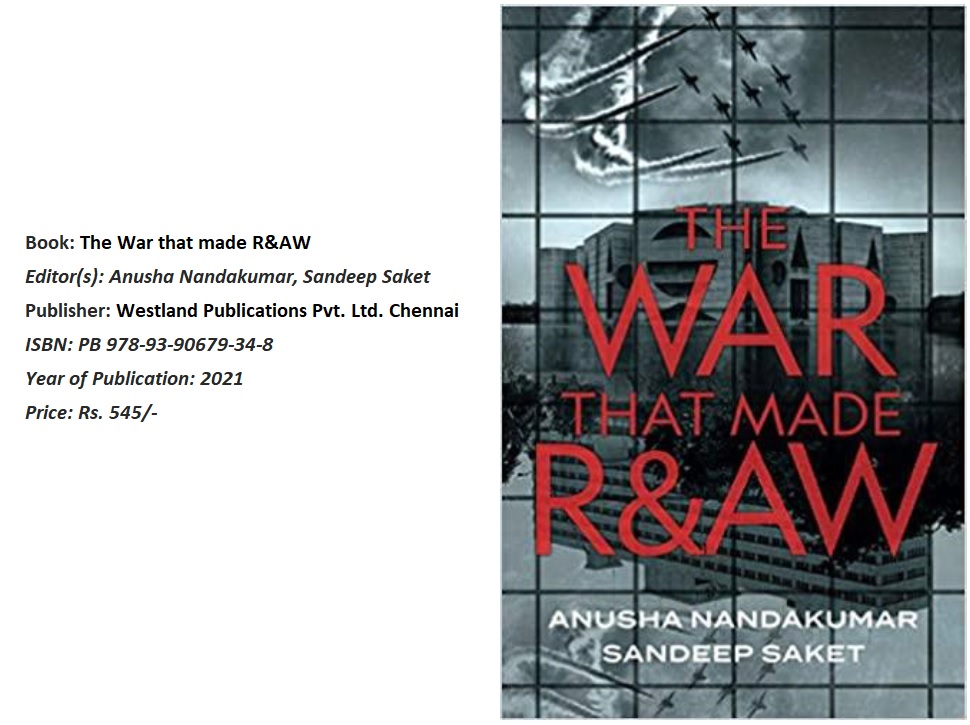
The book The War That Made R&AW published by Westland in collaboration with Golden Pen, is written by filmmakers and writers Anushka Nandakumar and Sandeep Saket. The book traces the origins of the Research & Analysis Wing (R&AW) and gives insights in the integral role played by its founder legendary spymaster R.N. Kao in helping India liberate Bangladesh in 1971.
Kao, a deputy director at the Intelligence Bureau (IB) took over as director of RAW in 1968 after former Prime Minister Indira Gandhi split the former to carve out an intelligence agency focused on international threats. He had one goal, to build an Intelligence gathering agency that would ensure security and integrity of India. Eventually, the legend of the ‘Kaoboys’- the nickname of the team he built would spread far and wide. His contribution to liberation of Bangladesh in 1971 is covered elaborately in the book.
The story of how R&AW was set up, the organisation’s role in Bangladesh’s fight for freedom have been wonderfully chronicled by the authors, detailing how operations were planned and executed. The compelling tale of covert operations, courage, quick thinking, and how wars are won on the battlefield and off the battlefield are discussed.
The book is an ode to perhaps, most iconic event in history of our nation post-independence. A war that was fought not only on land, air and sea, but most strategically, behind the scenes. The book is a crisp, action – driven narrative peppered with some fictional dialogue among high political decision makers and between top R&AW officials who are no longer alive and gives us a glimpse of R&AW but its real history perhaps remains hidden.
Books have already appeared on contribution of R.N. Kao and his close associate K. Sankaran Nair in building up this new organisation with new type of administrative structure for undertaking non – conventional activities abroad to preserve and enhance India’s strategic security. However, for first time, some second-rung founding leaders of R&AW have been revealed to the readers and the book notes their vital contribution.
It is a comprehensive, multi-focused book, mentioning valuable contribution made by India’s defence services and by external affairs ministry. The catalytic role played by R&AW has been very well captured. Preliminary steps in preparing the ground for the 1971 operations undertaken by Intelligence Bureau (IB) before R&AW was born has also been brought out. The book devotes some degree of focus on the creation of Bangladesh. The book covers first three years of RAW after its formation in 1968. RAW put itself on intelligence map of the world with its spectacular success in helping India pull off Bangladesh’s liberation in 1971. This book is about how RAW helped India win the 1971 war to create the new nation of Bangladesh. It was a combined effort of the Indian state, its military, its intelligence and Bengali freedom fighters, the Mukti Bahini. Many of anecdotes in the book may have already appeared in newspaper articles over the years and may not provide any new revelations.
This non – fiction book on Indian espionage is writers’ maiden attempt and they have done every justice to make it simple, easy yet thrilling to read. The book is easy to follow, in a direct writing style without cumbersome academic details, but with lot of research done. The book is so brimming with spy tales that it is impossible to leave reading mid-way. It is a book which is invigorating to read, and which makes us proud of our country’s institutions.


